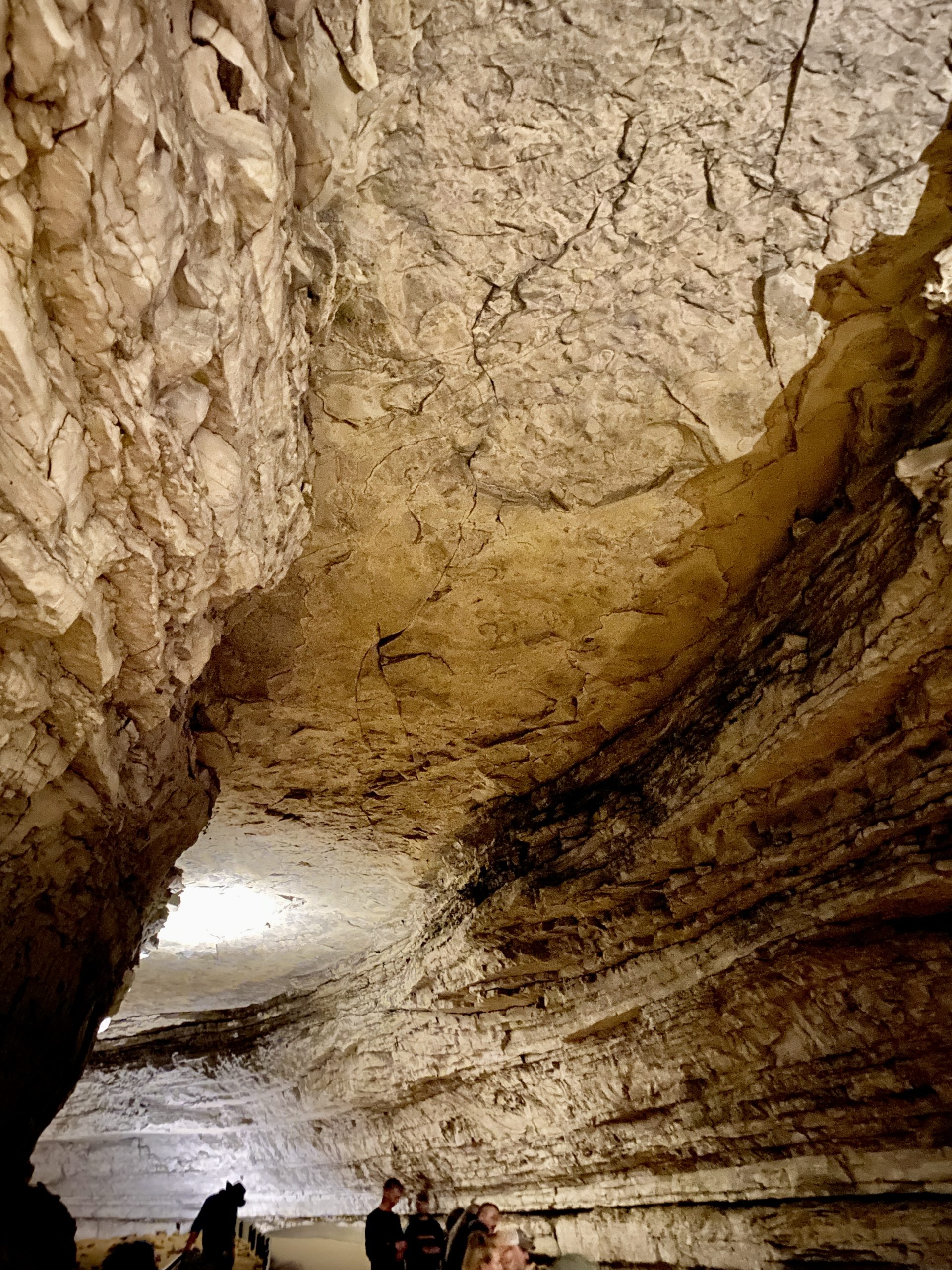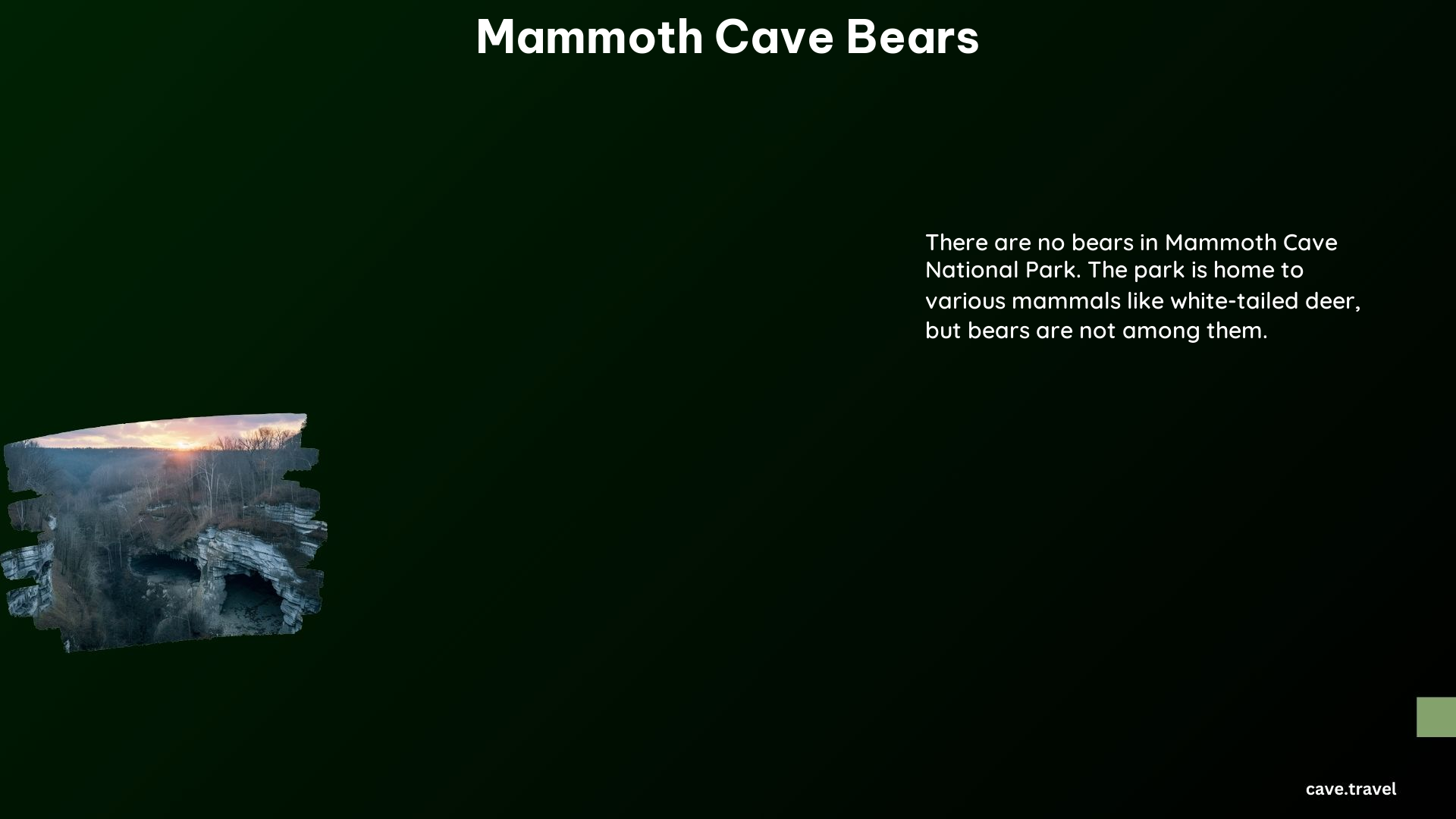Mammoth Cave National Park in Kentucky is renowned for its vast underground cave system, but did you know that it was once home to a unique species of bears? The Mammoth Cave bears, also known as the cave bears, were a distinct population that thrived in the dark, damp confines of the cave system. Although these bears are now extinct, their story is a fascinating glimpse into the park’s rich natural history.
The Mammoth Cave Bears: A Unique Subspecies

The Mammoth Cave bears were a subspecies of the extinct Ursus arctos, or brown bear, that adapted to the unique cave environment. These bears were larger than their surface-dwelling counterparts, with robust builds and powerful jaws that allowed them to thrive on the limited resources found deep underground.
Physical Characteristics of the Mammoth Cave Bears
- Size: Mammoth Cave bears were significantly larger than modern-day black bears, with males reaching up to 1,000 pounds in weight.
- Appearance: They had a distinctive domed forehead, a broad snout, and large, sharp teeth adapted for a carnivorous diet.
- Fur: Their fur was thick and shaggy, likely to provide insulation in the cool, damp cave environment.
Adaptations to the Cave Environment
The Mammoth Cave bears evolved a range of adaptations to survive in the challenging cave ecosystem:
- Reduced Eyesight: Like many cave-dwelling animals, the Mammoth Cave bears had reduced eyesight, as their eyes were not needed in the perpetual darkness of the caves.
- Enhanced Senses: To compensate for their poor vision, these bears developed heightened senses of smell and hearing, which helped them navigate the caves and locate prey.
- Specialized Diet: The Mammoth Cave bears were primarily carnivorous, feeding on small mammals, birds, and even other bears that ventured into the caves.
- Hibernation Adaptations: These bears were able to hibernate for extended periods, conserving energy and resources during the lean times in the caves.
The Extinction of the Mammoth Cave Bears

Sadly, the Mammoth Cave bears are now extinct, with the last known specimens disappearing around 12,000 years ago. The exact causes of their extinction are not fully understood, but it is believed that a combination of factors contributed to their demise:
- Climate Change: The end of the last Ice Age brought about significant changes in the environment, which may have disrupted the bears’ food sources and hibernation patterns.
- Human Interaction: The arrival of human populations in the region likely had a significant impact on the Mammoth Cave bears, as they may have been hunted for food or displaced from their cave habitats.
- Genetic Isolation: The Mammoth Cave bears were a geographically isolated population, which may have made them more vulnerable to environmental changes and disease.
Exploring the Mammoth Cave Bears Today
Although the Mammoth Cave bears are no longer with us, their legacy lives on in the rich history and natural wonders of Mammoth Cave National Park. Visitors to the park can learn about these fascinating creatures through exhibits and educational programs, and can even explore the very caves that were once their home.
Visiting Mammoth Cave National Park
Mammoth Cave National Park offers a variety of cave tours and outdoor activities for visitors to enjoy:
| Tour Type | Duration | Cost |
|---|---|---|
| Mammoth Passage Tour | 2 hours | $20 per adult |
| Historic Tour | 2 hours | $22 per adult |
| Domes and Dripstones Tour | 3 hours | $25 per adult |
It’s important to note that the park’s hours and tour schedules may vary depending on the season, so it’s best to check the park’s website or contact the visitor center for the most up-to-date information.
Exploring the Park’s Wildlife
In addition to the Mammoth Cave bears, Mammoth Cave National Park is home to a diverse array of wildlife, including:
- White-tailed deer
- Allegheny woodrats
- Rafinesque’s big-eared bats
- Cave crickets
- Numerous species of birds, reptiles, and amphibians
Visitors are encouraged to observe these animals from a safe distance and to follow all park regulations to ensure the protection of the park’s delicate ecosystem.
Conclusion
The Mammoth Cave bears may be long gone, but their legacy lives on in the rich history and natural wonders of Mammoth Cave National Park. By exploring the park’s caves and learning about the unique adaptations of these extinct bears, visitors can gain a deeper appreciation for the park’s diverse and fascinating ecosystem. Whether you’re a seasoned cave enthusiast or a first-time visitor, Mammoth Cave National Park is sure to captivate and inspire.
References
- https://www.nps.gov/maca/learn/nature/mammals.htm
- https://www.britannica.com/animal/cave-bear
- https://www.scientificamerican.com/article/what-happened-to-the-mammoth-cave-bears/
- https://www.nps.gov/maca/planyourvisit/fees.htm
- https://www.nps.gov/maca/learn/nature/animals.htm
